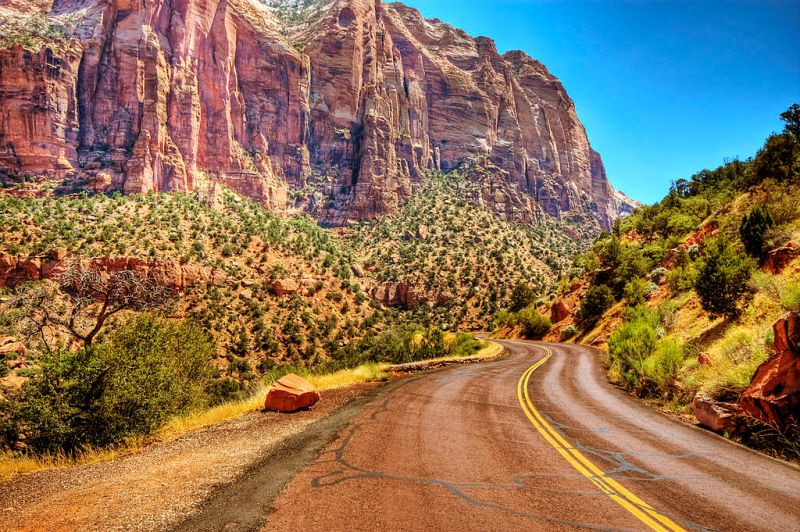
Utah’s first national park (established in 1919) is still growing after over one hundred years.
A part of the East Zion Initiative, the first 10 miles of the East Zion Bike mountain bike trail are now open for public use, thanks to donors and supporters. Formerly slated for commercial developments, the land on the east side of Zion National Park is now accessible for trail riders of all skill levels. This development was possible through the collaborative efforts of landowners, conservationists, the National Park Service, and the Utah Office of Outdoor Recreation. The end-of-October opening ceremony also kicked off fundraising efforts for a new Zion Visitor Center and another 24.5 miles of trails, which organizers hope to complete throughout the 2022-2023 seasons.
This freshly-carved mountain biking trail provides new views into the sprawling park. The trailhead is a quarter-mile down North Fork Country Road, the last road before heading into Zion’s east entrance on state Route 9. Even though the trail cuts through private land, it’s now publicly accessible because of land easements.
The primary partner donors in this project are the McLaws family, according to The Salt Lake Tribune. The family has owned this land just outside of Zion National Park for 23 years. Normally this land, valued at $1.3 million, would be reserved as a ranch and rich family inheritance. Instead, the McLaws are giving 20 acres of it away.
Related Guides
“I understand from talking to people, in moments around the campfire, that people need this,” Kevin McLaws said to the Tribune.
With approximately 4.5 million annual visitors coming from across the globe to view and hike its iconic red canyon, Zion is one of the most popular national parks. Most outdoor enthusiasts come to Zion for hikes like Angels Landing that rises above the park, and the Narrows that cuts through its 3,000-foot cliffs. This initiative is about leading people to abundant recreation beyond the cliffs.
“Creating meaningful access to Utah’s amazing landscape and doing it through a partnership with so many amazing stakeholders is a fulfillment of our purpose,” Pitt Grewe, executive director for the Utah Office of Outdoor Recreation, said at the Oct. 27 ceremony. “We can’t wait to see the progress continue and seek new ways we can continue to work together.”
The next step in the project, the proposed East Zion Visitor Center, will replace the last unprotected gateway to a national park in the lower 48 states. After its construction, the 7,000-square-foot building will serve to save more than 6,000 acres from future development and ensure that the east entrance to Zion remains open and accessible. Plans for the visitor center also include a fleet of electric and advanced-fueled vehicles to transport visitors from the park’s east side to other regional destinations.
As part of the Zion National Park Forever Project, the East Zion Initiative also works for the local economy and the future of the region. In March 2021, the Kem C. Gardner Policy Institute’s report on the economic impact of these Zion National Park developments found that the park’s east entrance could generate 545 jobs and $36.9 million per year from 2020 to 2030 in southwest Utah. The nonprofit aims to create long-term stewardship by engaging these gateway communities, and guests to create connections to the Greater Zion Landscape.
“I think it’s been inspired by our local community. And I think that when we think about pioneer spirit, this is sort of a next-gen version of that,” Mark Preiss, director for the Zion Forever Project, said just before riding his bike on the new trail.
To learn more about the plans for Zion’s new Visitor Center and the conservation lead approach, visit Zion National Park.
Read More: When to Book Your National Park Campsite



